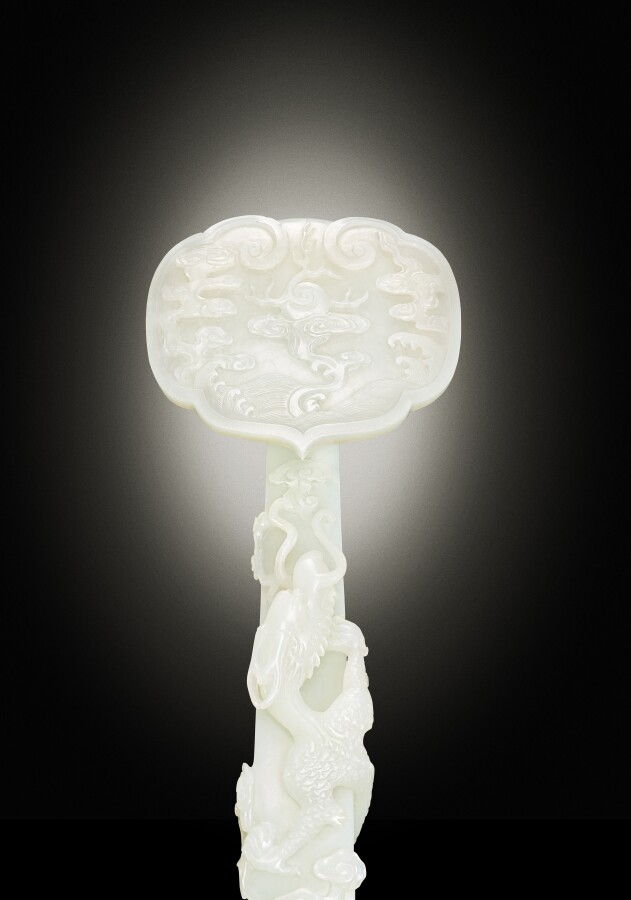The Sceptre of Power
T he Important Chinese Art auction opens with a selection of exceptional jade carvings from the De An Tang collection. The highlight is a unique white jade ruyi sceptre, encapsulating the power and authority of the Qianlong Emperor.

Since the dawn of human civilisation, sceptres have been universally used as potent symbols of authority and sovereignty. Sceptres were wielded by rulers from ancient Egypt and Babylon and continue to be used to this day.
It was made for the Qianlong Emperor, the most powerful man living on earth in the 18th century.

© Palace Museum, Beijing
The present sceptre was carved exactly 250 years ago, and it is arguably the best sceptre ever made for the all-powerful Qianlong Emperor.
Property from the De An Tang Collection
An exceptional imperial inscribed white jade ruyi sceptre
Mark and period of Qianlong, dated to the renchen year, corresponding to 1772
It is one of the finest and most precious imperial ruyi sceptres, a treasure rarely to be seen.

Ingeniously conceived, the sceptre is dominated by an ascending imperial dragon clambering through clouds around the shaft in pursuit of the flaming pearl of wisdom elevated by a sprig of lingzhi fungus rising from the crested waves. The Qianlong Emperor praised the quality of the present sceptre and wrote a dedicated poem in 1772.
It is a talisman fit for an emperor, a symbol of power like no other.


In addition to the De An Tang Collection, we are pleased to offer a selection of porcelain from the collection of the late entrepreneur Quincy Chuang, led by a rare Xuande blue and white ‘lions’ jar.

Highlights of the Qing imperial section include an embroidered satin and pearlwork ‘Twelve Symbol’ imperial court robe, and a large imperial green jade seal, made to commemorate the seventieth birthday of the Qianlong Emperor and to celebrate the birth of his first great-great-grandson, making an auspicious five generations under one roof.

The sale also includes an exquisite Northern Song dynasty Junyao purple-splashed ‘bubble bowl’, a unique Yongzheng famille-rose ‘peach’ box and cover formerly in the Meiyintang collection, and an exceptional Hongwu cinnabar lacquer bowl stand incised with the reign marks of the Yongle and Xuande emperors, arguably the most important piece of Ming lacquer in private hands.





























